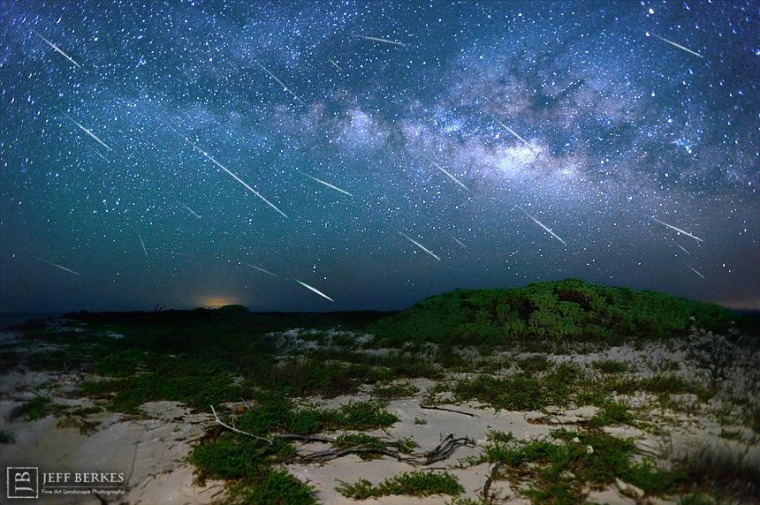When asked to name a comet, most people will remember Halley's. The Eta Aquarid meteor shower, produced by debris from Halley's Comet, peaks on Tuesday night, and you can watch live coverage of this Cinco de Mayo meteor shower online.
Into the morning hours on Wednesday, skywatchers will have a chance of sighting a few pieces of Halley's Comet — "comet litter," if you will — zipping through our atmosphere in the form of meteors. The online Slooh community observatory is hosting a free webcast of the shower at: http://www.slooh.com.
You can also watch the Eta Aquarid webcast live on Space.com, courtesy of Slooh.

Under ideal conditions, about 40 of these very swift meteors can be seen per hour. There are, however, two drawbacks this year. First, there is the moon, which was full on Sunday. Although the moon is now waning, it will still be in its bright gibbous phase early Wednesday and will likely "muscle in" on the fainter meteor streaks. [See some amazing Eta Aquarid meteor shower photos]
The other obstacle — at least for those watching from north of the equator — is that the radiant (the emanation point of these meteors) is at the "Water Jar" of the constellation Aquarius, which comes above the southeast horizon at around 3 a.m. local daylight time. Because the radiant never gets very high as seen from midnorthern latitudes, the observed rates are usually lower than the oft-quoted 40 per hour.
For most skywatchers, the best hope is catching a glimpse of a meteor emerging from the radiant that will skim the atmosphere horizontally -- much like a bug skimming the side window of an automobile. Meteor watchers call such shooting stars "Earthgrazers." They leave colorful, long-lasting trails.
If you do catch sight of the meteor shower, keep in mind that you'll likely be seeing the incandescent streaks produced by material that originated from the nucleus of Halley's Comet. When these tiny bits of comet collide with Earth, friction with our atmosphere raises them to a white heat and produces the effect popularly referred to as "shooting stars."
So it is that the shooting stars that we have come to call the Eta Aquarids are really an encounter with the traces of a famous visitor from the depths of space. Halley's Comet travels around the sun in an elliptical orbit that takes it beyond the orbit of Neptune and as close to the sun as inside the orbit of Venus; a trek that takes roughly 75 years to complete. Halley made its last visit to the sun in 1986 and will return to the vicinity of the sun and Earth in summer 2061.
Joe Rao serves as an instructor and guest lecturer at New York's Hayden Planetarium. He writes about astronomy for Natural History magazine, the Farmer's Almanac and other publications, and he is also an on-camera meteorologist for News 12 Westchester, N.Y. This is a condensed version of a report from Space.com. Read the full report. Follow Space.com on Twitter, Facebook and Google+.